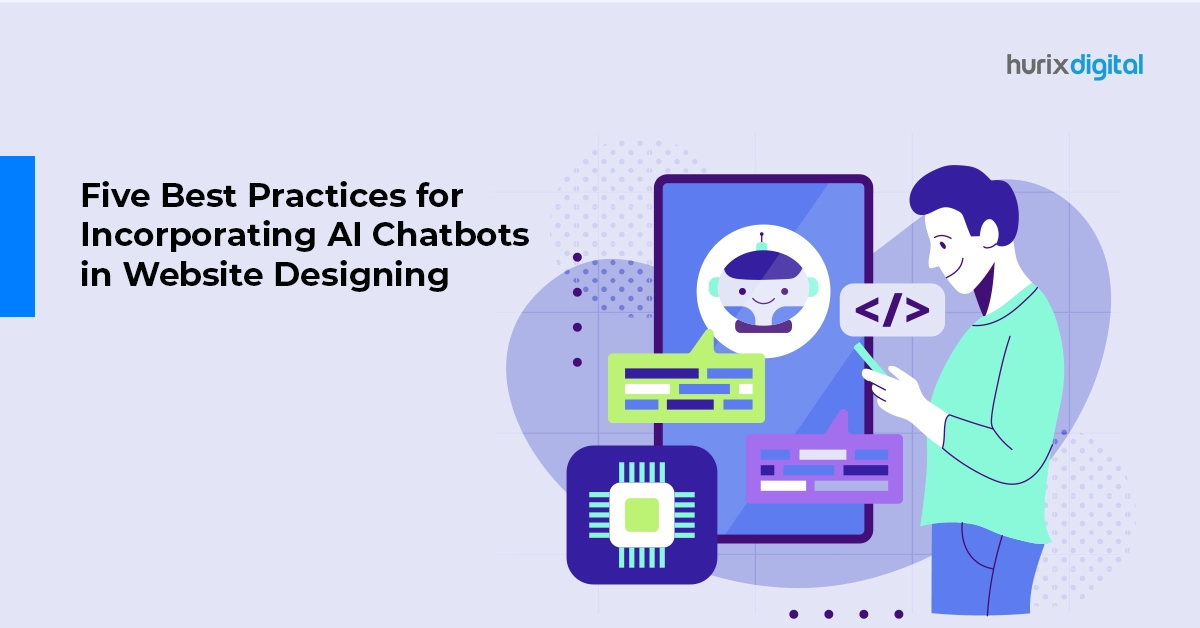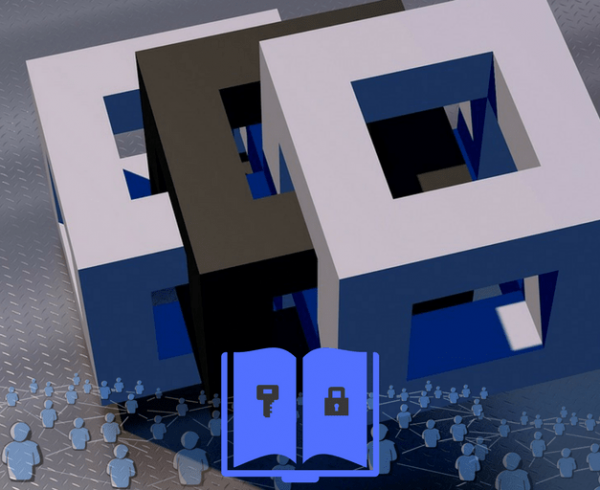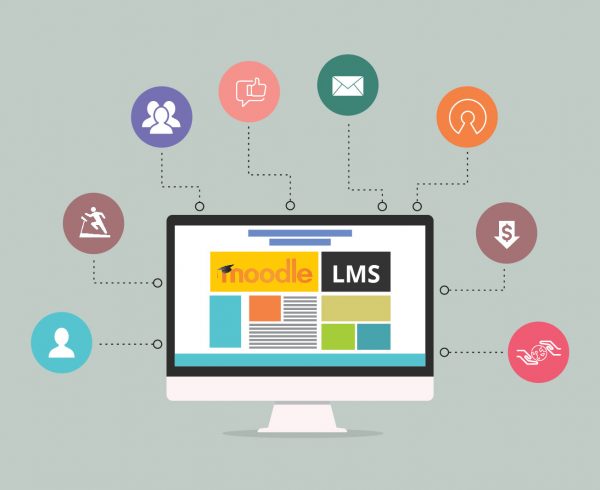Summary
This article has explored five best practices for incorporating AI chatbots in website design. The article has discussed the different types of chatbots that can be used for website design, and the best ways to approach using AI chatbots for website design.
Web development is a time-consuming and labor-intensive task when done manually. Typically, there would be a great deal of coding and testing required. Today, AI has revolutionized many sectors, specifically the web development sector, in quite a dramatic manner.
Web developers are using AI chatbots to optimize algorithms and data analysis that result in attractive yet highly functional and robust websites. Chatbots are the best things that have happened to technology since Thomas Edison invented the light bulb.
Today, we live in a chatbot-dominated world. We use a chatbot at least once a day to perform basic functions. But all chatbots are not the same, and when it comes to AI for website design, the choice needs to be specific to the task at hand.
In the dynamic landscape of website design, the integration of AI chatbots has emerged as a pivotal strategy to enhance user experience (UX) and meet the ever-growing expectations of customers.
For example, in a recent survey in the United States, 40% of consumers interviewed admitted to using chatbots in making purchases. This article explores five best practices for incorporating AI chatbots in website design, emphasizing the benefits and considerations associated with this advanced technology.
Table of Contents:
- What Type of Chatbot Technology to Use for Web Design?
- The 5 Best Ways to Approach Using Chatbots for Website Design
- To Sum it Up
What Type of Chatbot Technology to Use for Web Design?
The type of chatbots to use depends on the end-user. What are the requirements? What are the expected outcomes?
For web development, there are various aspects of the type of work involved, which can use a combination of different types of chatbots. Let us now consider the different ways AI for website design could use chatbots and which type would be the most suitable.
Choosing the right type of chatbot for web designing depends on the specific requirements and objectives of a project. Here are three common types of chatbots and their suitability for web design:
1. Rule-Based Chatbots
Rule-based chatbots follow decision trees and predefined rules. They are suitable for providing structured information and guiding users through step-by-step processes.
This type of chatbot is ideal for answering frequently asked questions, helping users select design templates, or providing information on design principles. Such chatbots find wide use in gathering critical customer information for lead generation.
2. AI-Powered Chatbots
AI-powered chatbots use machine learning algorithms to understand and respond to user queries dynamically. They continuously learn from interactions, offering a more personalized and context-aware experience.
Rule-based chatbots are basically a system of FAQs where a conversation of questions and answers is set up and solutions provided. However, this system relies on keyword detection and tends to be a bit rigid in terms of understanding all the user requests.
However, AI-powered chatbots are well-suited for handling complex design queries, suggesting personalized design elements based on user preferences, and adapting to users’ evolving needs. They are based on machine learning and deep learning, which means that they improve their efficiency and responsiveness with increased use.
3. Hybrid Chatbots
Hybrid chatbots combine rule-based and AI capabilities, offering a balanced approach towards AI for website design. They use predefined rules for certain tasks and switch to AI for more complex interactions, providing flexibility and efficiency.
Hybrid chatbots can be effective for guiding users through basic design processes using rules and seamlessly transitioning to AI capabilities for intricate design discussions or handling repetitive tasks and automating them.
Also Read: The Ultimate Guide to Front-End Website Development
The 5 Best Ways to Approach Using Chatbots for Website Design
When deciding which type of chatbot to use for web designing, consider factors such as the complexity of user interactions, the level of personalization required, and the specific goals of your web design project.
Each type has its strengths, and the choice depends on finding the right balance between structure and adapting to your target audience in the same way that AI is transforming so many other sectors.
1. Strategic Selection of Chatbot Technology
Choosing the right type of chatbot is foundational for successful integration into web design.
Web designers must carefully assess the nature of user interactions, customize requirements, and project goals to determine whether rule-based chatbots, AI-powered chatbots, or hybrid chatbots are the most suitable AI for website design.
Want a tailored and efficient user experience for web designers? You can achieve this by:
- Incorporating rule-based chatbots for structured information and step-by-step guidance.
- Leveraging AI-powered chatbots for complex design queries and personalized interactions.
- Employing hybrid chatbots for a balanced approach.
2. Aligning Chatbot Technology with Web Development Stages
To maximize the benefits of AI for website design, we need to integrate chatbots seamlessly into the various stages of web development. From the initial planning and design phases to the post-development stages, chatbots can impact user behavior by reducing bounce rates, increasing website sessions, and enhancing customer engagement.
By addressing navigation challenges and providing interactive information, chatbots become valuable assets throughout the entire web development process. This strategic alignment ensures a holistic approach to website design, considering user interactions at every step.
3. Leveraging Chatbots for Improved Customer Engagement
AI chatbots play a crucial role in maintaining customer engagement, resulting in improved rankings on search engines. By addressing user queries, providing relevant push notifications (pop-ups), and offering interactive dialogue, chatbots contribute to a more meaningful and engaging user experience.
Furthermore, the cost-effectiveness of integrating chatbots into social media messaging platforms enhances outreach. This is particularly beneficial for startups aiming to align users with their website development services.
4. Ensuring 24/7 Accessibility and Improves User Experience (UX)
One of the key advantages of AI chatbots is their availability around the clock.
Unlike human employees who work in shifts, chatbots provide 24/7 access to information, adding flexibility to the web design process and post-development stages. This constant availability contributes to trust-building and brand loyalty, as users perceive the website as a reliable source of assistance at any time.
The perpetual presence of chatbots integrates trust and loyalty into the website design, fostering a sense of reliability and dependability for users. This aspect becomes particularly crucial in maintaining business relevance and meeting evolving demands.
5. Keep in Line with Data-Driven Website Design Trends
AI chatbots excel in collecting and analyzing conversational data, offering valuable insights for website improvement.
Web designers should leverage this data to refine and enhance the user experience continuously. Analyzing user interactions, preferences, and feedback enables iterative improvements, ensuring that the website remains in alignment with evolving user expectations.
By adopting a data-driven approach, businesses can stay ahead of the curve, adapting a client’s website to changing user needs with a website chatbot. This practice not only contributes to maintaining relevance but also positions the website as a dynamic and responsive platform.
Also Read: 5 Ways Accessible Design Makes Your eCommerce Website a Shopaholic’s Dream
To Sum Up
Incorporating AI chatbots into website design requires a strategic and thoughtful approach. With the help of the above-stated ways, businesses can unlock the full potential of AI technology in crafting user-centric and effective websites. As the digital landscape continues to evolve, integrating AI chatbots will remain a cornerstone for delivering unparalleled user experiences in web design.
These 5 best practices build upon the foundational principles outlined earlier, creating a comprehensive framework for successfully incorporating AI chatbots into website design. However, there are experts in the AI field, like Hurix Digital, who could provide the necessary training and collaboration for setting up a comprehensive AI chatbot system serving all aspects of web designing seamlessly and effectively.
Contact us to know more today!











